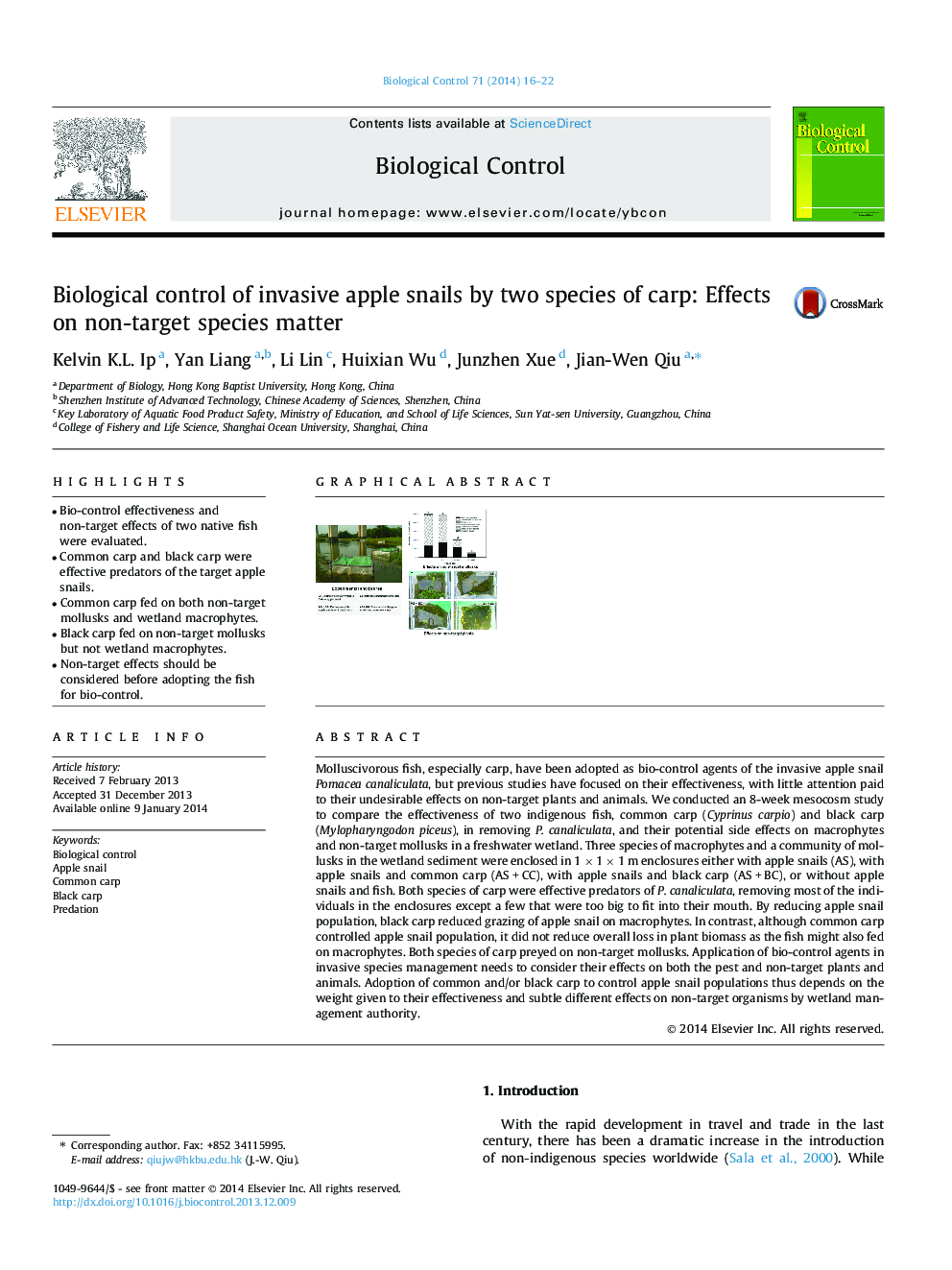| Article ID | Journal | Published Year | Pages | File Type |
|---|---|---|---|---|
| 4503944 | Biological Control | 2014 | 7 Pages |
•Bio-control effectiveness and non-target effects of two native fish were evaluated.•Common carp and black carp were effective predators of the target apple snails.•Common carp fed on both non-target mollusks and wetland macrophytes.•Black carp fed on non-target mollusks but not wetland macrophytes.•Non-target effects should be considered before adopting the fish for bio-control.
Molluscivorous fish, especially carp, have been adopted as bio-control agents of the invasive apple snail Pomacea canaliculata, but previous studies have focused on their effectiveness, with little attention paid to their undesirable effects on non-target plants and animals. We conducted an 8-week mesocosm study to compare the effectiveness of two indigenous fish, common carp (Cyprinus carpio) and black carp (Mylopharyngodon piceus), in removing P. canaliculata, and their potential side effects on macrophytes and non-target mollusks in a freshwater wetland. Three species of macrophytes and a community of mollusks in the wetland sediment were enclosed in 1 × 1 × 1 m enclosures either with apple snails (AS), with apple snails and common carp (AS + CC), with apple snails and black carp (AS + BC), or without apple snails and fish. Both species of carp were effective predators of P. canaliculata, removing most of the individuals in the enclosures except a few that were too big to fit into their mouth. By reducing apple snail population, black carp reduced grazing of apple snail on macrophytes. In contrast, although common carp controlled apple snail population, it did not reduce overall loss in plant biomass as the fish might also fed on macrophytes. Both species of carp preyed on non-target mollusks. Application of bio-control agents in invasive species management needs to consider their effects on both the pest and non-target plants and animals. Adoption of common and/or black carp to control apple snail populations thus depends on the weight given to their effectiveness and subtle different effects on non-target organisms by wetland management authority.
Graphical abstractFigure optionsDownload full-size imageDownload as PowerPoint slide
